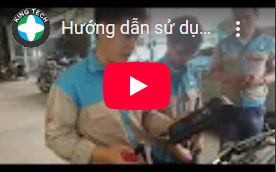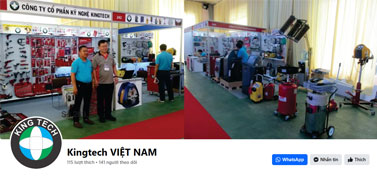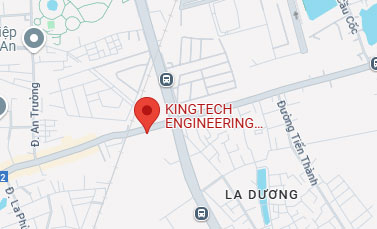UNDERSTANDING STEERING AND WHEEL ALIGNMENT ANGLES
Steering angles affecting a vehicle's alignment
Caster
Camber
Steering Axis Inclination (SAI)
Included Angle
Thrust Angle
Toe-In and Toe-Out
Other factors related to tracking, stability and tyre life
Set Back
Toe-Out on Turns
Bump Steer
Scrub Radius and Wheel Offset
1. Caster
Caster is the angle formed by a line through the pivot points and a vertical line through the stub axle. It can be negative or positive.
Caster assists in the self-centering action of the steering
Caster is not a tyre wearing angle
Excessive variation side to side means the vehicle will pull to the side of least positive caster
Reducing caster trail prevents low-speed shimmy
Increased caster improves vehicle stability and steering ‘feel’
Caster Trail Correction for High-Caster Angles
Caster Trail Correction for High-Caster Angles

2. Camber
Positive camber means the tyre and wheel assembly leans outwards at the top and negative camber means it leans inwards at the top.
Camber is a tyre wearing angle
Camber can be negative or positive
Negative camber provides a full footprint when cornering
Camber settings can be a compromise between good handling and tyre wear
Excessive positive camber wears outside of tyre tread and stresses the inner wheel bearing
Excessive negative camber wears inside of tyre tread and stresses the outer wheel bearing
Excessive variations will cause the car to pull to the side with the most positive camber
- Negative Neutral + Positive
Affects of Camber
Too much positive wears outside of tyre tread
Too much negative wears inside of tyre tread
Excessive variation side to side will pull to the side with the most positive camber
Excessive negative camber stresses outer wheel bearing
Excessive positive camber stresses inner wheel bearing
Camber Angles are affected by the following:
Changes to vehicle ride height
Uneven loading of vehicle
Body roll during cornering
Road camber
Condition of the suspension
Ride height of each spring
Caster angle
When you change your camber angle, wheel alignment should be checked and adjusted accordingly.
3. Steering Axis Inclination (SAI)
Steering Axis Inclination, or SAI, is the angle formed between pivot points and vertical line through center of wheel.
SAI is not adjustable
SAI is a diagnostic angle
SAI assists steering returnability
4. Included Angle
The Included Angle is a diagnostic angle that's obtained by:
Adding positive camber to SAI
Subtracting negative camber from SAI
5. Thrust Angle
The Thrust Angle must be on the centreline of the vehicle, from where the Thrust Angle must be measured. Rear Toe adjustments will correct the Thrust Angle.
Thrust Angle must be on the centreline:
Thrust Angle
Rear Toe adjustments will correct the Thrust Angle.
6. Toe-In and Toe-Out
When a pair of wheels is set so their leading edges are pointed slightly towards each other, this is referred to as toe-in. If the leading edges point away from each other, then it’s toe-out.
Toe settings affect three major areas of performance: tyre wear, straight-line stability and corner entry handling characteristics
For minimum tyre wear and power loss, the wheels on a given axle of a car should point directly ahead when it is travelling in a straight line
Excessive toe-in or toe-out causes the tyres to scrub, since they are always turned relative to the direction of travel
Too much toe-in causes accelerated wear at the outside edges of the tyres, while too much toe-out causes wear on the inside edges
Various Toe Settings:
7. Set Back
Set Back is the name given to the variation in the wheel base of a vehicle. It can be measured by modern wheel alignment machines and can be altered by caster adjustment. Excessive Set Back can cause the vehicle to "Run Off".
8. Toe-Out On Turns
The Ackerman Angle provides the correct toe-out on turns:
The line is drawn through:
Centre of the footprint
Tie Road attaching point on steering arm
Meet in centre of line drawn through rear axle
Angle of turn of front wheels will be correct
Ackerman Effect In Corners
Inside wheel in turn requires greater angle of turn
Outside wheel requires less turning angle
Lines projected will meet at intersection point outside vehicle
Effect On Ackerman Angle When Wheel Base Increased Or Extra Axle Added
Line now drawn midway between rear axles
Intersection points changed
Front turn angle not correct
Tyres will scrub and squeal
9. Bump Steer
Bump Steer is the variation in toe that occurs as the front suspension moves up and down without body roll and is caused by:
Incorrect Steering Linkage Design Or Tie Rod Location
Bent Steering Linkage
Toe Adjusted Without Centralising Steering Gear
Soft Suspension Bushes and Worn Components
Misalignment of Rack or Steering Linkage in Frame
10. Scrub Radius and Wheel-Offset
Positive Scrub Radius
Positive Scrub Radius Lines Meet Below Road Surface
Usually Rear Wheel Drive With Front Wheel Toe In
SAI Usually Less Than 10 Degrees
Negative Scrub Radius
Negative Scrub Radius Lines Meet Above Road Surface
Used On Front Wheel Drive With Front Wheel Toe Out Or Zero Toe
SAI Usually Greater Than 10 Degrees

 Caster assists in the self-centering action of the steeringCaster is not a tyre wearing angleExcessive variation side to side means the vehicle will pull to the side of least positive casterReducing caster trail prevents low-speed shimmyIncreased caster improves vehicle stability and steering ‘feel’Caster Trail Correction for High-Caster AnglesCaster Trail Correction for High-Caster Angles
Caster assists in the self-centering action of the steeringCaster is not a tyre wearing angleExcessive variation side to side means the vehicle will pull to the side of least positive casterReducing caster trail prevents low-speed shimmyIncreased caster improves vehicle stability and steering ‘feel’Caster Trail Correction for High-Caster AnglesCaster Trail Correction for High-Caster Angles 2. CamberPositive camber means the tyre and wheel assembly leans outwards at the top and negative camber means it leans inwards at the top.Camber is a tyre wearing angleCamber can be negative or positiveNegative camber provides a full footprint when corneringCamber settings can be a compromise between good handling and tyre wearExcessive positive camber wears outside of tyre tread and stresses the inner wheel bearingExcessive negative camber wears inside of tyre tread and stresses the outer wheel bearingExcessive variations will cause the car to pull to the side with the most positive camber
2. CamberPositive camber means the tyre and wheel assembly leans outwards at the top and negative camber means it leans inwards at the top.Camber is a tyre wearing angleCamber can be negative or positiveNegative camber provides a full footprint when corneringCamber settings can be a compromise between good handling and tyre wearExcessive positive camber wears outside of tyre tread and stresses the inner wheel bearingExcessive negative camber wears inside of tyre tread and stresses the outer wheel bearingExcessive variations will cause the car to pull to the side with the most positive camber
 - Negative Neutral + PositiveAffects of CamberToo much positive wears outside of tyre treadToo much negative wears inside of tyre treadExcessive variation side to side will pull to the side with the most positive camberExcessive negative camber stresses outer wheel bearingExcessive positive camber stresses inner wheel bearingCamber Angles are affected by the following:Changes to vehicle ride heightUneven loading of vehicleBody roll during corneringRoad camberCondition of the suspensionRide height of each springCaster angle
- Negative Neutral + PositiveAffects of CamberToo much positive wears outside of tyre treadToo much negative wears inside of tyre treadExcessive variation side to side will pull to the side with the most positive camberExcessive negative camber stresses outer wheel bearingExcessive positive camber stresses inner wheel bearingCamber Angles are affected by the following:Changes to vehicle ride heightUneven loading of vehicleBody roll during corneringRoad camberCondition of the suspensionRide height of each springCaster angle When you change your camber angle, wheel alignment should be checked and adjusted accordingly.3. Steering Axis Inclination (SAI)Steering Axis Inclination, or SAI, is the angle formed between pivot points and vertical line through center of wheel.
When you change your camber angle, wheel alignment should be checked and adjusted accordingly.3. Steering Axis Inclination (SAI)Steering Axis Inclination, or SAI, is the angle formed between pivot points and vertical line through center of wheel. SAI is not adjustableSAI is a diagnostic angleSAI assists steering returnability
SAI is not adjustableSAI is a diagnostic angleSAI assists steering returnability 5. Thrust AngleThe Thrust Angle must be on the centreline of the vehicle, from where the Thrust Angle must be measured. Rear Toe adjustments will correct the Thrust Angle.
5. Thrust AngleThe Thrust Angle must be on the centreline of the vehicle, from where the Thrust Angle must be measured. Rear Toe adjustments will correct the Thrust Angle. Thrust Angle must be on the centreline:Thrust AngleRear Toe adjustments will correct the Thrust Angle.6. Toe-In and Toe-OutWhen a pair of wheels is set so their leading edges are pointed slightly towards each other, this is referred to as toe-in. If the leading edges point away from each other, then it’s toe-out.Toe settings affect three major areas of performance: tyre wear, straight-line stability and corner entry handling characteristicsFor minimum tyre wear and power loss, the wheels on a given axle of a car should point directly ahead when it is travelling in a straight lineExcessive toe-in or toe-out causes the tyres to scrub, since they are always turned relative to the direction of travelToo much toe-in causes accelerated wear at the outside edges of the tyres, while too much toe-out causes wear on the inside edgesVarious Toe Settings:
Thrust Angle must be on the centreline:Thrust AngleRear Toe adjustments will correct the Thrust Angle.6. Toe-In and Toe-OutWhen a pair of wheels is set so their leading edges are pointed slightly towards each other, this is referred to as toe-in. If the leading edges point away from each other, then it’s toe-out.Toe settings affect three major areas of performance: tyre wear, straight-line stability and corner entry handling characteristicsFor minimum tyre wear and power loss, the wheels on a given axle of a car should point directly ahead when it is travelling in a straight lineExcessive toe-in or toe-out causes the tyres to scrub, since they are always turned relative to the direction of travelToo much toe-in causes accelerated wear at the outside edges of the tyres, while too much toe-out causes wear on the inside edgesVarious Toe Settings: 7. Set BackSet Back is the name given to the variation in the wheel base of a vehicle. It can be measured by modern wheel alignment machines and can be altered by caster adjustment. Excessive Set Back can cause the vehicle to "Run Off".
7. Set BackSet Back is the name given to the variation in the wheel base of a vehicle. It can be measured by modern wheel alignment machines and can be altered by caster adjustment. Excessive Set Back can cause the vehicle to "Run Off". 8. Toe-Out On TurnsThe Ackerman Angle provides the correct toe-out on turns:
8. Toe-Out On TurnsThe Ackerman Angle provides the correct toe-out on turns: The line is drawn through:Centre of the footprintTie Road attaching point on steering armMeet in centre of line drawn through rear axleAngle of turn of front wheels will be correct
The line is drawn through:Centre of the footprintTie Road attaching point on steering armMeet in centre of line drawn through rear axleAngle of turn of front wheels will be correct
 9. Bump SteerBump Steer is the variation in toe that occurs as the front suspension moves up and down without body roll and is caused by:Incorrect Steering Linkage Design Or Tie Rod LocationBent Steering LinkageToe Adjusted Without Centralising Steering GearSoft Suspension Bushes and Worn ComponentsMisalignment of Rack or Steering Linkage in Frame
9. Bump SteerBump Steer is the variation in toe that occurs as the front suspension moves up and down without body roll and is caused by:Incorrect Steering Linkage Design Or Tie Rod LocationBent Steering LinkageToe Adjusted Without Centralising Steering GearSoft Suspension Bushes and Worn ComponentsMisalignment of Rack or Steering Linkage in Frame Positive Scrub Radius Lines Meet Below Road SurfaceUsually Rear Wheel Drive With Front Wheel Toe InSAI Usually Less Than 10 DegreesNegative Scrub Radius
Positive Scrub Radius Lines Meet Below Road SurfaceUsually Rear Wheel Drive With Front Wheel Toe InSAI Usually Less Than 10 DegreesNegative Scrub Radius Negative Scrub Radius Lines Meet Above Road SurfaceUsed On Front Wheel Drive With Front Wheel Toe Out Or Zero ToeSAI Usually Greater Than 10 Degrees
Negative Scrub Radius Lines Meet Above Road SurfaceUsed On Front Wheel Drive With Front Wheel Toe Out Or Zero ToeSAI Usually Greater Than 10 Degrees





